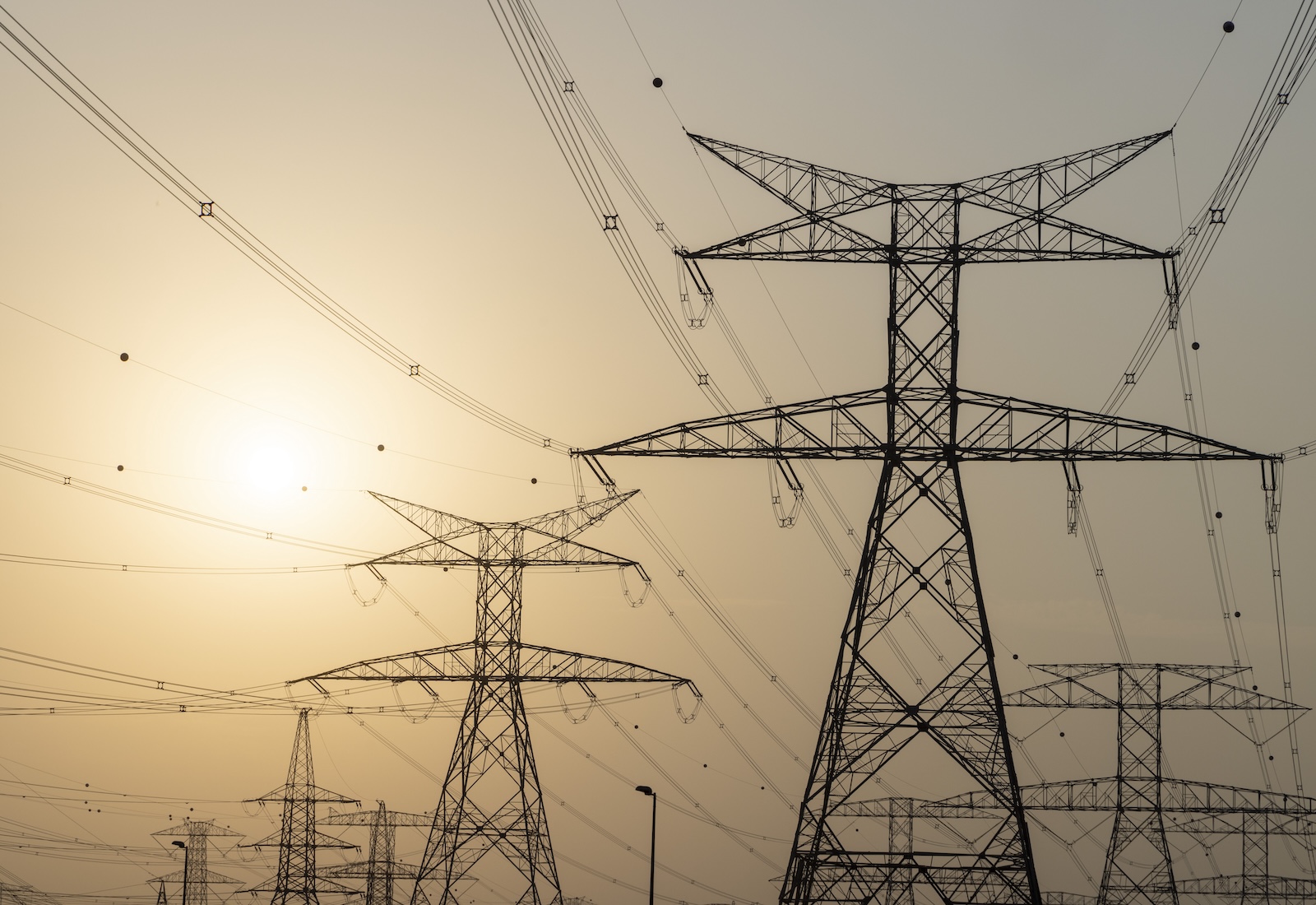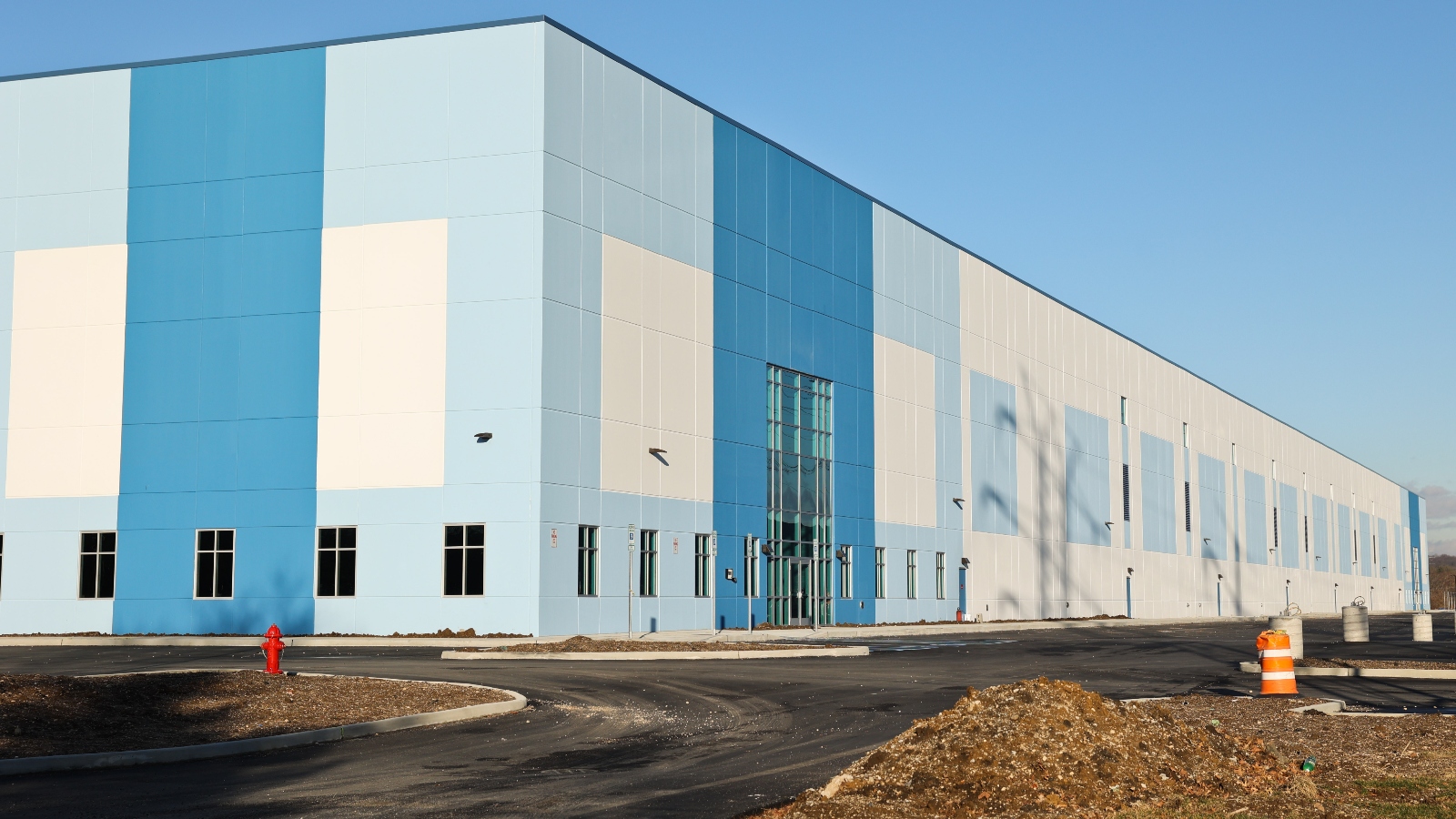For nearly 200 years, two transformative global forces have grown in tandem: economic activity and carbon emissions. The two have long been paired together, or, in economist-speak, “coupled.” When the economy has gotten bigger, so has our climate footprint.
This pairing has been disastrous for the planet. Economic growth has helped bring atmospheric CO2 concentrations all the way up to 420 parts per million. The last time they were this high was during the Pliocene epoch 3 million years ago, when global temperatures were 5 degrees Fahrenheit hotter and sea levels were 65 feet higher.
Most mainstream economists would say there’s an obvious antidote: decoupling. This refers to a situation where the economy keeps growing, but without the concomitant rise in greenhouse gas emissions. Many economists and international organizations like the World Bank, the United Nations, and the Organization for Economic Cooperation and Development celebrate evidence that decoupling is already occurring in many countries.
“Let me be clear, economic growth coupled with decarbonization is not only realistic, it has already been happening,” said Fatih Birol, executive director of the International Energy Agency, or IEA, in a commentary published in 2020.
It’s an alluring prospect — that we can reach our climate goals without fundamentally changing the structure of the global economy, just by swapping clean energy in for fossil fuels. But a band of rogue economists has begun poking holes in the prevailing narrative around decoupling. They’re publishing papers showing that the decoupling that’s been observed so far in most cases has been short term, or it’s happened at a pace that’s nowhere near quick enough to reach international climate targets. These heterodox economists call decoupling a “neoliberal fantasy.”
The stakes of this academic debate are high: If decoupling is a mirage, then addressing the climate crisis may require letting go of the pursuit of economic growth altogether and instead embracing a radically different vision of a thriving society. That would involve figuring out “how to design future livelihoods that provide people with a good quality of life,” said Helmut Haberl, a social ecologist at the University of Natural Resources and Life Sciences in Vienna, Austria. Rather than fixating on growth, he argued, “We should engage more in the question of, ‘What future do we want to build?’”
The basic idea behind decoupling has been ingrained in mainstream environmental thought for decades. The 1987 Brundtland Report — a landmark publication of the United Nations designed to simultaneously address social and environmental problems — helped establish it through the framework of sustainable development. It argued for “producing more with less,” using technological advances to continue economic growth while decreasing the release of pollutants and the use of raw materials.

John Thys / AFP via Getty Images
Decoupling continues to underlie most global climate policies today. The Organization for Economic Cooperation and Development, for example, has spent nearly two decades promoting it under its “green growth” agenda, urging world leaders to “achieve economic growth and development while at the same time combating climate change and preventing costly environmental degradation.” Decoupling is also baked into the IEA’s influential Net Zero Emissions by 2050 policy roadmap, which assumes that full decarbonization can take place alongside a doubling of the global economy by 2050.
That economic growth should continue is simply assumed by virtually every international institution and government. Policymakers connect growth with more jobs and better living standards, and use it as the primary measure of societal well-being. They also point to growth as a way to keep pace with the rising energy demands and economic needs of a growing global population.
“The prospects for reversing inequality in all countries will be far greater when the overall economy is growing,” writes Robert Pollin, an economics professor at the University of Massachusetts Amherst.
The good news is that at least some decoupling has been happening on a global scale for decades. Greenhouse gas emissions have continued to rise, but not quite as fast as gross domestic product, or GDP — the value of all goods and services produced in a given area. This type of decoupling is described as “relative” or “weak.” As the IEA has noted, the tight link between climate pollution and economic activity “has loosened” in every region of the world except for parts of Southeast Asia and the Middle East.
But the kind of decoupling needed to achieve international climate targets is called “absolute” decoupling, when economic growth and greenhouse gas emissions veer in opposite directions: GDP up, emissions down. More recent research has documented this in a number of high-income countries. The U.S., for example, saw a 32 percent increase in GDP between 2005 and 2021, while its overall CO2 emissions fell by about 17 percent.
Something similar appears to have happened in other developed economies like France, Sweden, and Germany — even when you account for so-called “consumption-based” emissions, which include emissions from the production of goods that are imported or exported. In other words, these countries seem to really be reducing climate pollution and not just offshoring it to the developing world. Since 2016, reports from the World Resources Institute, the Breakthrough Institute, and independent researchers have shown more and more countries achieving periods of absolute decoupling, including their consumption-based emissions. Perhaps the splashiest analysis came in 2022, when a Financial Times data columnist reported that 70 countries — one in three worldwide — had experienced at least five consecutive years of absolute decoupling between 1990 and 2020.
“Green growth is already here,” the columnist wrote.
Some experts have raised questions about the data used to make these claims — GDP, for instance, can be measured in different ways that affect decoupling calculations, and country-level emissions data typically excludes major pollution sources like aviation and methane leaks from uncapped oil wells. Research led by Haberl — the largest literature review to date on the empirical evidence for absolute decoupling — suggests that only countries experiencing an economic crisis have successfully reduced their emissions, and that evidence for an inverse relationship between GDP and CO2 emissions is “seldom found.” But there’s a general consensus among economists that at least some amount of absolute decoupling has occurred in a handful of countries. In a study published last year in The Lancet Planetary Health, even green growth skeptics found evidence of absolute decoupling in 11 of the world’s highest-income countries.

Michael M. Santiago / Getty Images
“Everyone should be cheering about this,” Kate Raworth, a heterodox economist and professor at Amsterdam University of Applied Sciences, told Grist.
This leads to more nuanced questions, not about whether decoupling is possible — at least for individual countries — but whether currently observed trends can be extrapolated out to create a climate-safe future for the entire planet. In other words, can decoupling happen fast enough to limit global warming to “well below” 2 degrees Celsius (3.6 degrees Fahrenheit), the target laid out in the 2015 Paris Agreement?
One simple way to look at it is to take the rate of emissions reductions achieved in countries that have successfully decoupled, and see how long it would take for them to fully decarbonize. That’s essentially what Jefim Vogel and Jason Hickel — researchers at the University of Leeds and the Autonomous University of Barcelona, respectively — did in the Lancet Planetary Health study. They found that, if 11 high-income countries continued their achieved rates of emissions reduction, it would take them more than 220 years to cut emissions by 95 percent — far longer than the net-zero-by-2050 timeline called for by climate experts.
“The decoupling rates achieved in high-income countries are inadequate for meeting the climate and equity commitments of the Paris Agreement and cannot legitimately be considered green,” the authors wrote. In an interview with Grist, Vogel likened optimism around gradual decoupling to saying, “Don’t worry, we’re slowing down,” while the Titanic races toward an iceberg.
Some economists argue that just because decoupling at the scale and speed necessary hasn’t happened yet doesn’t mean it can’t. With enough investment in renewable energy and efficient clean technologies, they argue, economic growth can continue without the rise in emissions that has historically accompanied it. As noted by researchers at the University of Oxford and the Mercator Research Institute on Global Commons and Climate Change, carbon-intensive sectors like electricity generation actually contribute relatively little to the world economy, compared to high-value but lower-emitting sectors like IT, real estate, and social work.
According to Pollin, the University of Massachusetts economics professor, faster decoupling is simply a matter of money and political will. If policymakers invest 2.5 percent of global GDP each year, he said — about $4.5 trillion — then the world economy can completely decarbonize within 40 to 50 years, all while boosting GDP through the creation of tens of millions of new jobs in the clean energy industry.

This plan would likely involve new policies to address renewable energy permitting challenges, boost energy efficiency for appliances and housing, and rein in global methane emissions — not to mention the urgent need to curtail the lobbying power of the fossil fuel industry. Economic growth will be a natural byproduct of huge new investments in clean energy infrastructure, according to Pollin, and it will also be essential for creating new jobs for displaced fossil fuel workers and improving living conditions in developing countries. “There is simply no alternative,” he said.
Economists like Vogel and Hickel, however, draw a different conclusion. As long as countries pursue economic growth, they don’t believe world leaders will be able to zero out emissions fast enough to comply with international climate goals and principles of climate justice. According to their research, doing so would require, on average, a 10-fold increase in currently observed decoupling rates, which they consider to be “empirically out of reach.” They note that their conclusions are conservative because their data does not take into account emissions from agriculture, forestry, other land use, aviation, and shipping, and their projections assume that countries began adequate climate mitigation in 2023, which does not appear to have happened.
Other researchers have found that, even under aggressive climate mitigation policies, emissions relative to constant GDP growth can only decrease at a maximum rate of 3 percent per year. That’s only about a third of the decoupling rates that some experts say would be needed to limit global warming to 1.5 or 2 degrees C (2.7 or 3.6 degrees F).
“Absolute decoupling is not sufficient to avoid consuming the remaining CO2 emission budget under the global warming limit of 1.5 degrees C or 2 degrees C and to avoid climate breakdown,” concluded the Intergovernmental Panel on Climate Change in its most recent assessment.
Instead of making growth greener, some economists call for a whole new economic paradigm to address converging social and ecological crises. They call it “post-growth,” referring to a reorientation away from GDP growth and toward other metrics, like human well-being and ecological sustainability. Essentially, they want to prioritize people and the planet and not care so much what the stock market is doing. This would more or less free countries from the decoupling dilemma, since it eliminates the growth imperative altogether.
Raworth, the professor at Amsterdam University of Applied Sciences, calls her version of the post-growth agenda “doughnut economics.” In this visual model, the inner ring of the doughnut represents the minimum amount of economic activity needed to satisfy basic needs like access to food, water, and shelter. The outer ring signifies the upper limits of natural resource use that the Earth can sustain. The goal, she argues, is for economies to exist between the inner and outer rings of the doughnut, maintaining adequate living standards without surpassing planetary limits.
“Our economies need to bring us into the doughnut,” Raworth told Grist. “Whether GDP grows needs to be a secondary concern.”

Henry Nicholls / AFP via Getty Images
Vogel and Hickel go a little further. They call for a planned, deliberate reduction of carbon- or energy-intensive production and consumption in high-income countries, a concept known as “degrowth.” The rationale is that much of the energy and resources used in high-income countries goes toward carbon-intensive products that don’t contribute to human welfare, like industrial meat and dairy, fast fashion, weapons, and private jets. Tamping down this “less necessary” consumption could slash greenhouse gas emissions, while lower energy demand could make it more feasible to build and maintain enough energy infrastructure. Some research suggests that reducing energy demand could limit global warming to 1.5 degrees C without relying on unproven technologies to draw carbon out of the atmosphere.
Degrowth advocates say that deprioritizing growth could allow countries to redirect their attention to policies that actually boost people’s quality of life: shorter working hours, for example, as well as minimum income requirements, guaranteed affordable housing and health care, free internet and electricity, and more widespread public transit.
“Degrowth is as much oriented toward human well-being and social justice as it is toward preventing ecological crises,” Vogel said.
Crucially, degrowth advocates mainly promote the concept in high-income countries, which are historically responsible for the vast majority of greenhouse gas emissions. They acknowledge that many developing countries still need to grow their economies in order to raise populations out of poverty. Those existing inequities, they argue, put even more onus on developed countries to shrink polluting industries and cut their consumption, in order to balance out other countries’ necessary growth.
Several experts told Grist it was a “distraction” to ask whether decoupling greenhouse gas emissions from economic growth is possible, as this question elides many areas of agreement between green growth and degrowth advocates. Both sides agree that moving off fossil fuels will require a massive buildout of renewable energy infrastructure, and that countries need to urgently improve living standards and reduce inequality.
“The goal is to get to zero emissions and climate stabilization” while improving people’s well-being, said Pollin, the University of Massachusetts Amherst professor. “Those are the metrics I care about.”
They also broadly agree that it’s time to move past GDP as a primary indicator of societal progress. But that’s easier said than done. We are “structurally dependent” on GDP growth, as Raworth put it. Publicly traded companies, for example, prioritize growth because they’re legally obligated to act in the best interest of shareholders. Commercial banks fuel growth by issuing interest-bearing loans, and national governments face pressure to grow the economy in order to reduce the burden of public and private debt.
Making any meaningful shift away from focusing on GDP would require dismantling these structural dependencies. “It’s massively challenging, there’s no doubt about that,” Vogel told Grist. “But I think they’re necessary changes … if we want to avert a real risk of catastrophic environmental changes and tackle long-standing social issues.”
This article has been updated to better reflect Vogel and Hickel’s definition of degrowth, and to clarify their position that countries can’t pursue economic growth and decarbonize fast enough to comply with international climate targets and principles of climate justice.
This story was originally published by Grist with the headline How to ‘decouple’ emissions from economic growth? These economists say you can’t. on Mar 4, 2024.




